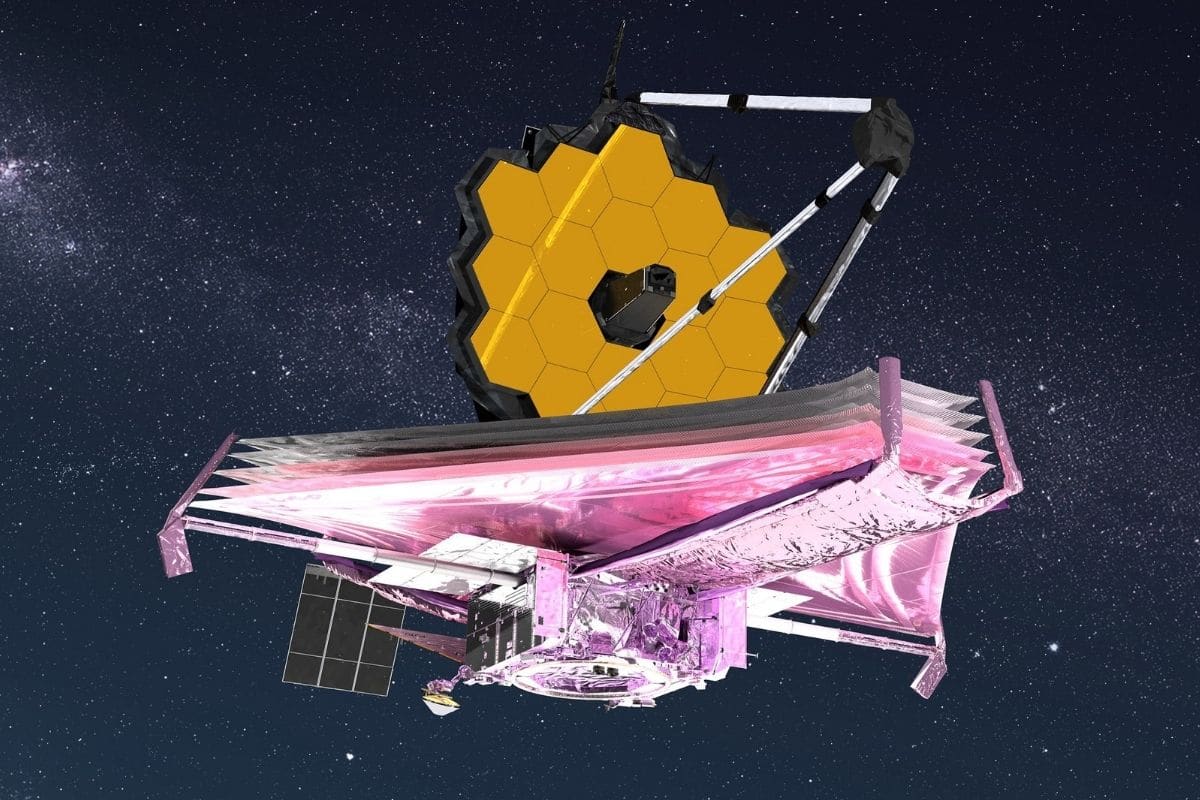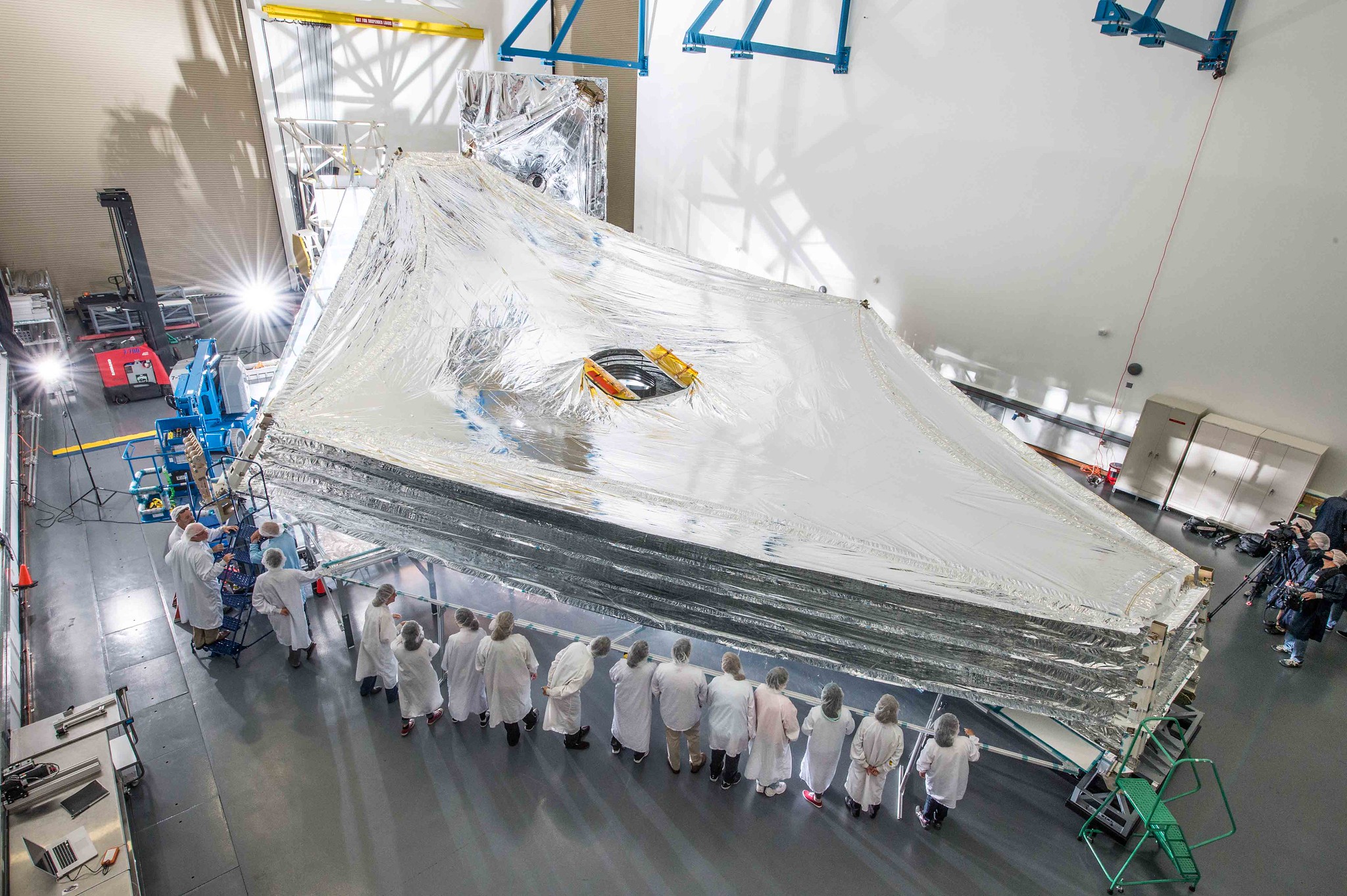

The last two layers will be pulled tight today.
So while the job isn’t done yet, NASA is already delighted that the first three layers have been pulled tight. Because it was certainly not obvious that that would just happen, says James Cooper, who can call himself the official manager of the James Webb solar shield. “Tightening the solar shield is very challenging because it requires complex interactions between the structure, the mechanisms used to tighten the solar shield, the cables and the membranes. This was the most difficult phase for us to test on the ground, so it’s great that everything went so well today (…) and we look forward to pulling the remaining layers.”

Here’s a trial version of the Sun Shield fully extended and stretched on Earth. A dress rehearsal for the process that is now taking place in space. Image: NASA/Chris Gunn.
Completion
Tightening the first three layers took NASA just over 5.5 hours. It is unclear how long it will take to tighten the last two layers. But it is expected that the solar shield – a crucial part of the James Webb Space Telescope – can be completed today.
Ice cold
When the last two layers are also tightened, the sun shield – which is about the size of a tennis court – is immediately operational. From then on, it will protect the space telescope from external sources of light and heat (such as the sun, moon and Earth). In concrete terms, the solar shield ensures that the telescope cools down to a temperature of around -233 degrees Celsius. The telescope has to be kept so cold, otherwise it won’t be able to see the infrared light from faint, distant objects. In addition, the solar shield also creates a thermally stable environment, which is very important for maintaining the correct alignment of the primary mirror (which is made up of 18 mirror segments).

The image on the left shows the fully operational James Webb Space Telescope. The sun shield is located below the mirror and will always be located between the sun/earth/moon and the telescope (see image on the right). As a result, the telescope actually has a warm and cold side. The warm side is the side that faces the sun, moon and earth, where the temperature rises to about 85 degrees Celsius. The cold side – which faces away from the sun, earth and moon – is opposite and has a temperature around -233 degrees Celsius. Images: NASA/STScI.
layered
To keep the telescope cool, an ingenious sun shield made of kapton material is used and consists of five layers. Each layer blocks part of the heat and gives it back to the room at the side (see image below).

The bottom layer of the solar shield – which is therefore aimed at the sun, earth and moon – already blocks the lion’s share of the heat, the remaining heat is then largely blocked by the second layer, after which the third settles again with a a large part of the heat remaining afterwards. It means that each successive layer is slightly cooler than the other and only very little heat manages to penetrate through all five layers and reach the telescope. Left photo: Northrop Grumman / Right image: STScI.
Unfold and pull tight
The sun shield is quite large. It measures just over 21 by 14 meters. Given its dimensions, it was therefore not possible to launch it unfolded. And so it was, as it were, squashed – putting the five layers on top of each other – and then folded. In the past week, the sun shield was unfolded. And now people are busy pulling those layers apart – like a kind of harmonica – and then pulling them tight one by one.
The first three layers are now ready. These are the three layers closest to the sun, i.e. on the warm side of the telescope. The last two layers follow today. But then James Webb isn’t finished yet; there are still some nerve-racking phases on the agenda. For example, the second mirror – which must reflect the light from the main mirror to the instruments behind the main mirror – will then be brought into the correct position. And then the sides of the main mirror – each housing three of the 18 mirror segments – still have to be unfolded, after which the position of those 18 segments also has to be adjusted to make them function as one main mirror. In addition, the telescope must also successfully settle in Lagrange point 2 at the end of January: the point from which it must unravel the secrets of the cosmos. And so there is still a lot of work to be done. But gradually we are getting closer to the moment when James Webb actually gets to work. That moment will – as it stands now – fall sometime in the summer of 2022.
Source material:
NASA
Image at the top of this article: NASA GSFC / CIL / Adriana Manrique Gutierrez